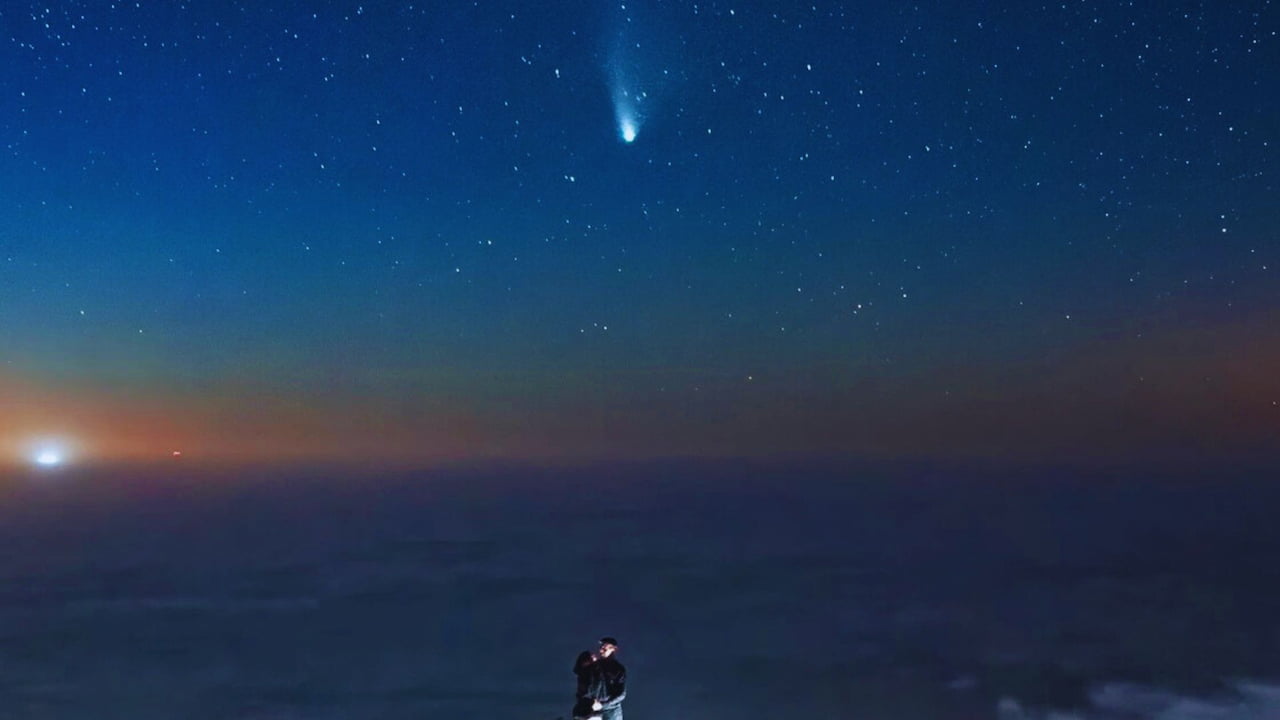Celestial Spectacle: Comet A3 Makes Final Appearance Before 80,000-Year Hiatus
Tonight, skywatchers have a once-in-a-lifetime chance to witness a rare cosmic event. Comet A3, also known as Tsuchinshan-ATLAS, will make its final visible appearance before vanishing from Earth’s skies for the next 80,000 years.
This evening, a celestial visitor from the distant Oort Cloud will pass within 44 million miles of our planet. Astronomers are urging enthusiasts to seize this unique opportunity, as the comet will become increasingly difficult to spot in the coming days.
Stargazers can find Comet A3 in the Ophiuchus constellation along the western horizon. Expect the space rock to shine at a magnitude of +2 or +1, potentially visible to the naked eye. However, experts suggest using binoculars for the best viewing experience.
The prime viewing window falls between October 12 and 13. After this brief period, the comet will quickly fade from view, becoming completely unidentifiable by October 20. This fleeting appearance follows the comet’s previous sighting between September 27 and October 2, after which it temporarily disappeared due to its proximity to the sun.
NASA describes comets as “cosmic snowballs of frozen gases, rock, and dust that orbit the Sun.” When frozen, these celestial objects can be as large as a small town. As a comet’s orbit brings it closer to the Sun, it heats up, spewing dust and gases into a giant glowing head larger than most planets.
Dust and ice make up Comet A3’s tail, which stretches an impressive 18 million miles. We expect the sun’s light to illuminate this tail in striking blue and white hues, creating a spectacular contrast against the night sky.
Erika Gibb, a physics and astronomy professor at the University of Missouri—St. Louis, explains the rarity of such an event: “Most comets don’t normally get bright enough for someone to see with the naked eye. Some comets, despite their beauty, are difficult to observe and study due to their location in the sky.
The best time to view Comet A3 is during the first 45 minutes after sunset, looking toward the western horizon. Astronomy apps can provide detailed guidance for locating the comet in the night sky. However, observers should be aware that cloud cover or moonlight might affect visibility.
Interestingly, Comet A3 has already caught the attention of those beyond Earth’s atmosphere. Astronauts Matthew Dominick and Dom Pettit have captured footage of the space rock from the International Space Station, demonstrating its visibility even from space.
This cosmic visitor’s appearance follows the 2020 sighting of Comet NEOWISE, which was also visible to the naked eye, even in large cities. Comet A3 is considered the brightest of its kind since that event.
For those lucky enough to catch a glimpse, this sighting offers a connection to the vast expanse of our solar system. Comets like A3 are believed to originate from either the Kuiper Belt or the more distant Oort Cloud, regions teeming with icy bodies orbiting our Sun.
As we marvel at this celestial spectacle, it’s worth considering the immense timescales involved. The next time Comet A3 graces our skies, human civilization will likely look very different—if it exists at all. This perspective serves as a humbling reminder of our place in the cosmic tapestry.
Despite the comet’s appearance as a mere smudge of light, its significance surpasses its visual impact. These cosmic wanderers carry with them the building blocks of life and have played a crucial role in shaping the chemistry of our planet throughout its history.
As night falls, take a moment to step outside and look up. Whether you spot Comet A3 or not, the act of stargazing connects us to the wonders of the universe and our endless curiosity about the cosmos.
Remember, opportunities like this are truly rare. So grab your binoculars, find a dark spot away from city lights, and prepare for a possible encounter with a visitor from the outer reaches of our solar system. Who knows? The memory of this cosmic rendezvous might just stay with you for the next 80,000 years.
